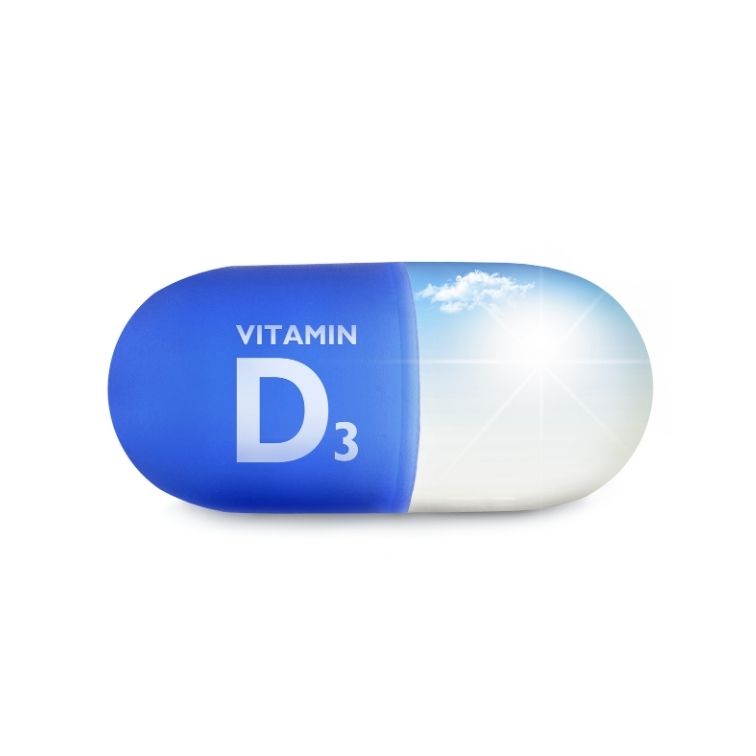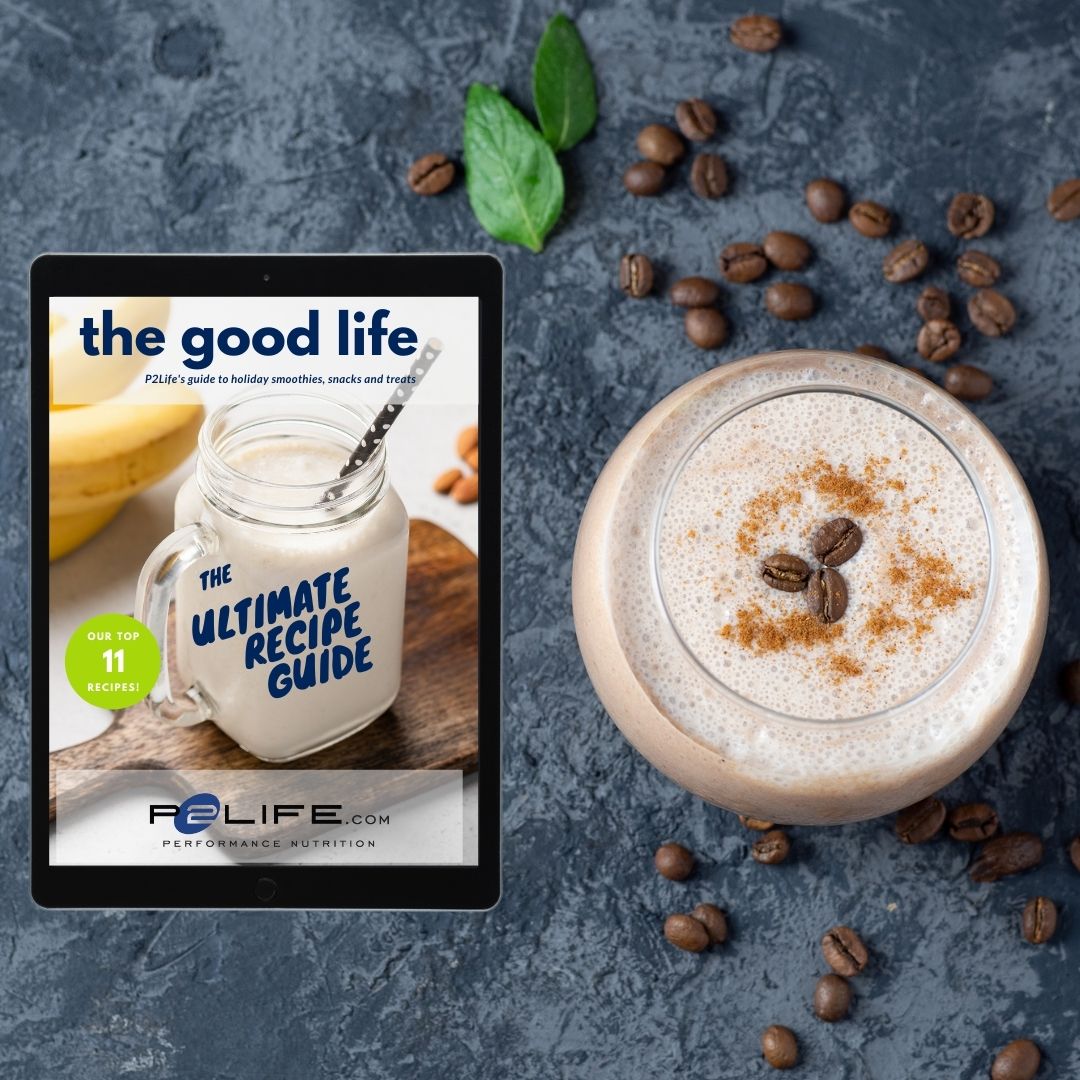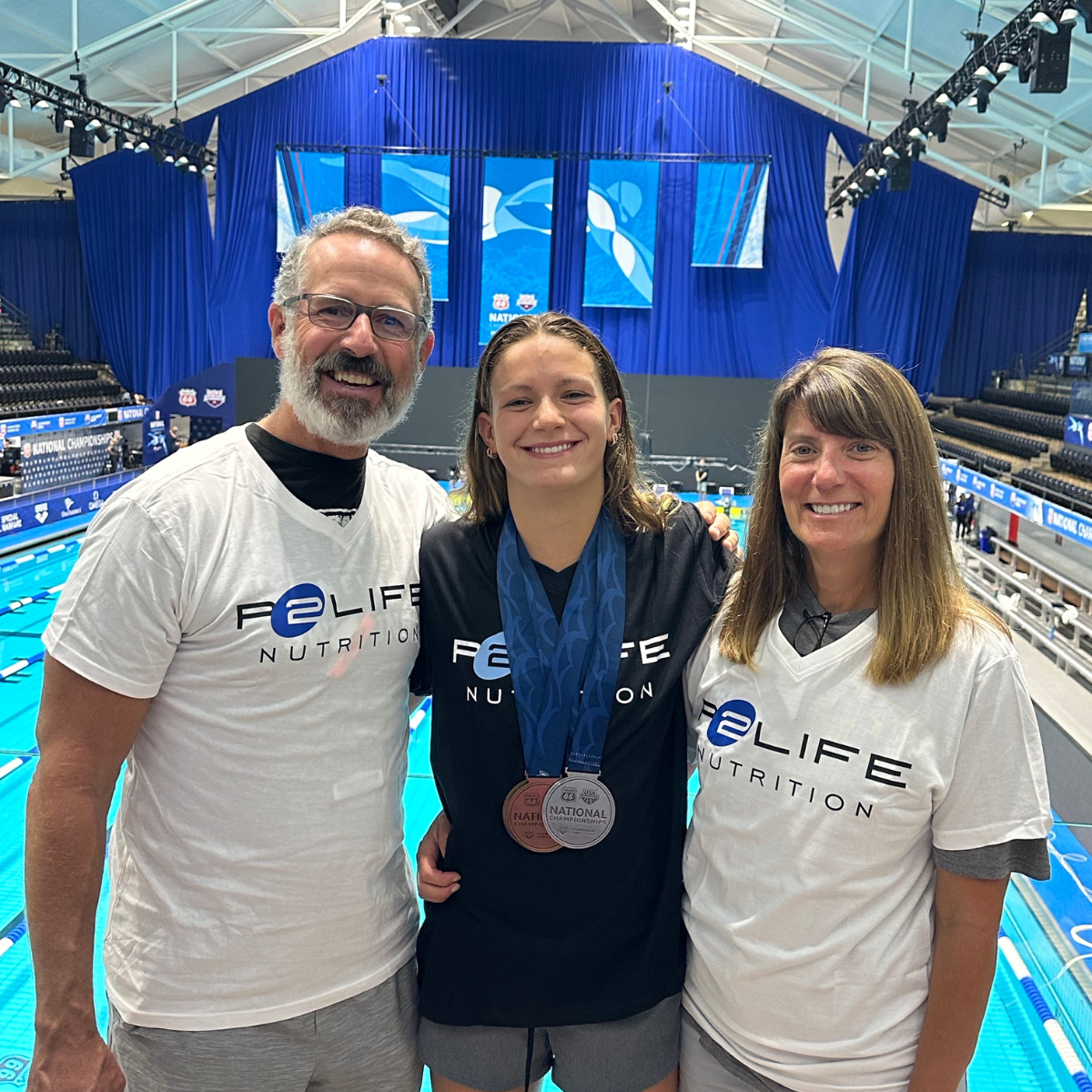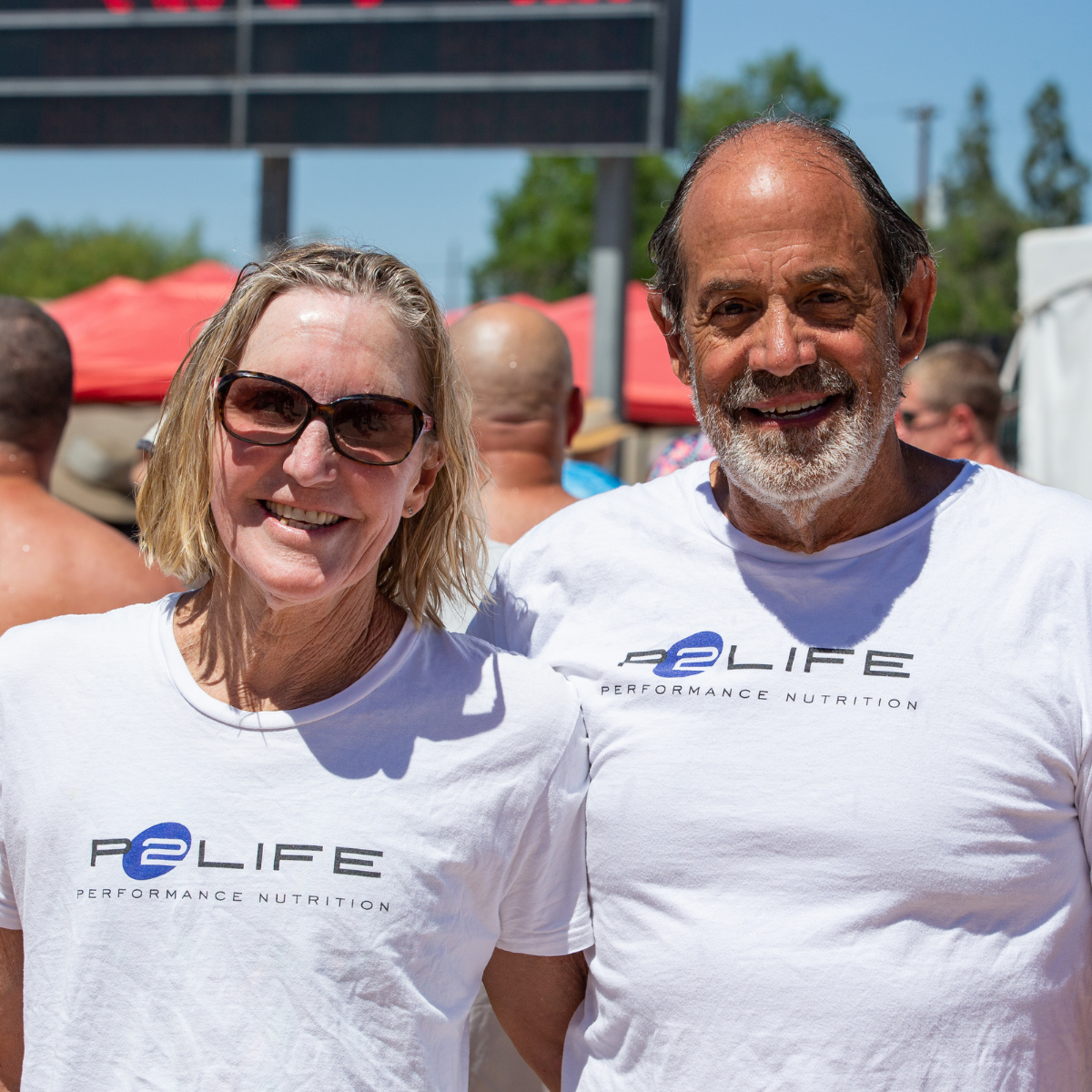
The Sunshine Vitamin - one key ingredient in avoiding a catastrophic flu season
The pumpkin-spiced lattes dropped faster than the first fall leaves of 2020, and the onslaught of media articles and videos warning about a potentially catastrophic flu season were not far behind. Athletes have spent a lot of time away from their sports this year, so what can you do to avoid spending any more precious time away from your usual training?
You can try to get ahead of what’s expected to be a particularly nasty flu season by starting with a review of your meal plan. Are you getting the optimal amounts of the right nutrients to meet the demands of your training and daily life? There are many factors out of your control, especially during this turbulent year that’s bound to be the subject of at least a few history books. In addition to getting a flu shot, if recommended by your medical healthcare professional, try to set aside some time to make sure your diet is capable of supporting your body to take on whatever 2020 tries to throw at it, in training as well as in life in general.
Are you familiar with the Sunshine Vitamin?
Vitamin D is sometimes referred to as the sunshine vitamin as it can be synthesized by the skin when exposed to sunlight for a given time. The implication of moving into fall and winter is that we tend to spend less time outdoors and as such the body is less likely to produce sufficient amounts of this extremely beneficial vitamin. Even those who enjoy their outdoor time regardless of the weather are likely to synthesize less vitamin D as the winter sun typically contains less of the ultraviolet B radiation (UVB) that our skin requires in order to synthesize this vitamin.
The many significant health benefits of vitamin D have been well documented. Vitamin D plays a key role in bone health, it assists with the absorption of calcium and helps to reduce inflammation. Vitamin D is also involved in the regulation of immune cells, and has a well-documented positive impact on the immune system. These benefits are vital to the wellbeing of athletes who continually put their bodies under stress and strain.
Sufficient vitamin D levels are associated with a lower risk of respiratory tract infections. In September 2020 Time Magazine reported Dr Anthony Fauci, head of the National Institute of Allergy and Infectious Diseases commenting on vitamin D:
“If you are deficient in Vitamin-D, that does have an impact on your susceptibility to infection,” Fauci said. “So I would not mind recommending - and I do it myself - taking vitamin-D supplements.”
This proclamation led many people to question whether vitamin D might help reduce their chances of contracting COVID-19. Time addressed these queries with a clarification from the NIH. “At this point, the National Institutes of Health says there isn’t enough evidence to recommend using vitamin-D to prevent or treat COVID-19, but it also says there isn’t enough evidence to recommend against it, either.”
In Business Insider Fauci was also quoted saying the following:
“There is good evidence that if you have a low vitamin D level, that you have more of a propensity to get infected when there are infections around,” Fauci said. “Those data are pretty good data.”
There are multiple studies that have found a link between low vitamin D and higher rates of infection. For example, the Archives of Internal Medicine conducted a study with 19,000 participants and found that the participants with the lowest levels were most likely to be infected with a cold. In another case, a global study funded by the National Institute of Health Research (U.K) found “daily or weekly supplementation had the greatest benefit for individuals with the most significant vitamin D deficiency (blood levels below 10mg/dl) - cutting their risk of respiratory infection in half - and that all participants experienced some beneficial effects from regular vitamin D supplementation”.
The stakes are high for athletes who put their bodies under significant stress while training. It’s crucial for athletes to prioritize their recovery to reduce their chances for injury and illness. Prioritizing recovery involves ensuring that you’re getting enough of the right nutrients, and getting enough vitamin D should be high up on the priority list for every athlete.
If you’re struggling to get enough vitamin D, you’re not alone
Getting enough vitamin D is a national challenge as according to the National Institutes of Health (NIH), “most people in the United States consume less than recommended amounts of vitamin D.” According to a study published in Nutrition Research an estimated 41.6% of adults in the U.S have a vitamin D deficiency. The significant impacts vitamin D deficiency has on health makes this a global problem. Vitamin D deficiency is associated with muscle weakness, type II diabetes, cancers, osteoporosis as well as autoimmune and cardiovascular diseases.
The current daily recommendation for vitamin D is 400-800 IU/day, which according to new research may be far too low for adults. In the United States and Canada the safe upper limit published is 4,000 IU. Recent research published in the Journal of Nutrients suggests the safe upper limit is actually around 10,00 IU/day, and researchers suggest that the current daily recommendations are “grossly underestimated”.
You might be curious how these conclusions could be so different. The answer requires a complicated footnote on data selection and meta-regression analysis. If you’re not curious skip ahead to the next paragraph. The National Academies of Sciences, formulated their recommendations using group averages, whereas the new research is based on individual data, which is considered the gold standard to reduce reporting bias, between-people variability, and allows for more detailed verification.
Spoiler alert: according to the FDA, we will soon see the daily recommendation for vitamin D double.
The challenge of getting enough vitamin D has serious implications during flu season, not just for individuals, but for our teams, families and community. By reducing the number of individuals who are vitamin D deficient we may stand to reduce the burden of overall infections in our community during cold and flu season.
How do you get Vitamin D:
So where do you get vitamin D and how can you make sure you’re getting enough? Vitamin D can be synthesized by the body when it’s exposed to sunlight, or it can be ingested from a limited number of foods. Holik succinctly explains how the body synthesizes vitamin D, “during exposure to sunlight the ultraviolet B radiation converts 7-dehydrocholesterol to previtamin D(3), which in turn rapidly isomerizes to vitamin D(3)”.
The time required to synthesize sufficient levels of vitamin D depends on a number of variables including geography, skin color, time of day and amount of skin exposed. This makes it difficult to say with certainty how much time outside you would need to synthesize the optimal amount of vitamin D. According to the literature, 30 minutes of midday summer sun in Norway could provide the equivalent of 10,000 - 20,000 IU of vitamin D. The literature also estimates that 13 minutes of midday sun in the UK during summer three times a week should be sufficient to maintain healthy vitamin D levels in Caucasian adults. Studies estimate people with darker skin would need more time in the sun to maintain healthy levels, this could be anywhere between 30 minutes to three hours of sun exposure. All of these estimates are based on direct sunlight. UVB rays do not penetrate windows, so even in buildings with good natural light, your skin won’t be synthesizing vitamin D inside without direct exposure.
Once vitamin D has been synthesized by the skin, or is ingested through food, it is converted by the liver and kidneys into its active form 1,25-dihydroxyvitamin D (cholecalciferol), more commonly known as vitamin D3.
Foods high in Vitamin D:
During the summer months, if you have a balanced diet, you’re likely getting enough vitamin D to get by. However as the weather starts turning cold, you’re likely spending less time outdoors, and as the winter sun contains less UVB, you’re less likely to be getting sufficient vitamin D from the sun alone. This is why you should pay special attention to your meal plan, especially since vitamin D is only found in a select number of foods. Vitamin D can be found in fortified cereals, milk, eggs, fish and red meat. Fish such as salmon, tuna and fish oil are all excellent sources of vitamin D. Getting vitamin D from foods is less efficient than getting it from sun exposure, as to maintain sufficient levels you would need to consume these foods almost daily, compared to getting direct sunlight a few times a week. A balanced and well-thought out meal plan can go a long way towards maintaining optimal levels of vitamin D.
Supplements:
Supplementing with Vitamin D is a popular and effective way to maintain healthy levels of vitamin D. One option is to check your vitamin D levels with a healthcare professional, as you want to be certain you’re getting enough vitamin D but not overdoing it, as extreme amounts of anything can be damaging or even toxic. The benefits of supplementing with vitamin D are well documented and there are a variety of options available on the market for consumers, however not all of them are made equal and few are suitable for competitive athletes.
Choosing a vitamin D supplement that’s right for you
Standard multivitamins don’t always provide vitamins and minerals in optimal amounts that address the additional needs of active individuals, and some companies are able to offer low-cost multi-vitamins by opting for cheaper (often lower quality and less effective) ingredients. If you’re a competitive athlete looking to supplement with vitamin D or are wanting quality assurance you’re going to want to follow three steps in order to decide what would work best for you.
- Tested Safe: Does the company providing the supplement test their products to be free of banned and illegal substances? Do they use an independent company to conduct the tests and are the results available online?
- Effective ingredients: What kind of vitamin D is included in the supplement? Does it provide you with vitamin D2 (ergocalciferol), or vitamin D3 (cholecalciferol)? Vitamin D3 is the better choice as it’s used more effectively by the body.
- Optimal dosages: How much vitamin D does the supplement provide you with and how many capsules would you need to take to maintain sufficient levels of vitamin D? The recommended dosage for moderate supplementation of D3 is between 1,000-2,000 IU. In order to calculate your dosage based on your weight you’re ideally looking at 20-80IU/1-4mcg/kg daily.
P2Life provides three different options to help you maintain optimal vitamin D levels and support your active lifestyle, and you’ll be able to tick off each step above when looking at our products. Our gender specific Sport Multivitamins range and the NutriBoost all contain vitamin D3 in therapeutic dosages (2,000 IU), and were specifically formulated to meet the needs of athletes. All P2Life products are certified to be free of banned and illegal substances by an independent third party, the Banned Substances Control Group (BSCG) and every result from the batch tests conducted are available on the BSCG website. P2Life products are packed with the optimal amounts of the vitamins, minerals and key nutrients athletes need to perform at their best, while maintaining optimal health.
If you’re looking for something to help reduce recovery times, and ensure you’re getting enough vitamin D without scrupulous meal planning then P2Life’s NutriBoost is the best option. The NutriBoost is packed with the right macro and micro nutrients athletes need to build and maintain lean muscle and jumpstart recovery. If you find yourself waking up feeling stiff and tired, especially in winter, chances are your body might be missing something. The NutriBoost helps to fill in the gaps in any diet, providing athletes with peace of mind, optimal nutrition and recovery so they can show up energized and ready to take on whatever is thrown their way.
Sources
- https:// ods.od.nih.gov/ factsheets/ VitaminD-Health Professional/
- https:// www.p2life.com/ blogs/blog/ vitamin-d-the- importance-of -getting-enough
- https:// examine.com/ supplements/ vitamin-d/
- https:// www.mdpi. com/ 2072-6643/ 9/5/ 469/htm
- https:// examine.com/ nutrition/ should-1000 -iu-be-the- new-rda-for-vitamin -d/
- https:// pubmed. ncbi.nlm.nih. gov/21310306/
- https:// pubmed. ncbi.nlm.nih. gov/20795941/
- https:// examine.com/ nutrition/when- should-i-take -vitamin-d/
- https:// examine.com/ nerd/article/ does-vitamin-d -supplementation -fight-off -the- common- cold/
- https:// pubmed.ncbi. nlm.nih.gov/ 27631625/
- https:// pubmed.ncbi. nlm.nih.gov/ 17823437/
- https:// examine.com/ nerd/article/ should-1000 -iu-be-the- new-rda- for-vitamin-d/
- https:// www.nhs.uk/ live-well/ healthy-body/ how-to-get- vitamin-d- from-sunlight/
- https:// news.harvard .edu/gazette/ story/2017/ 02/study-confirms -vitamin-d- protects-against- cold-and-flu/
- https:// www.healthline. com/nutrition/ vitamin-d- from-sun# overview
- https:// www. medicalnewstoday. com/articles/ 326167#tips
- https:// www.nhs.uk/live- well/healthy- body/how-to- get-vitamin-d- from-sunlight/
- https:// www.ncbi.nlm .nih.gov/pmc/ articles/ PMC3356951/
- https:// www.sciencedaily.com/r eleases/2017/ 02/170216 110002.htm
- https:// www.ncbi.nlm.nih. gov/pmc/articles/ PMC6121423/
- https:// www.fda.gov/ food/new- nutrition-facts- label/daily- value-new-nutrition- and-supplement- facts-labels#1
- https:// time.com/ 5889546/ vitamin-d-coronavirus/
- https:// www.businessinsider. com/fauci-3-tips- keep-your- immune-system- strong-vitamins- sleep-2020-9













Leave a comment
This site is protected by hCaptcha and the hCaptcha Privacy Policy and Terms of Service apply.